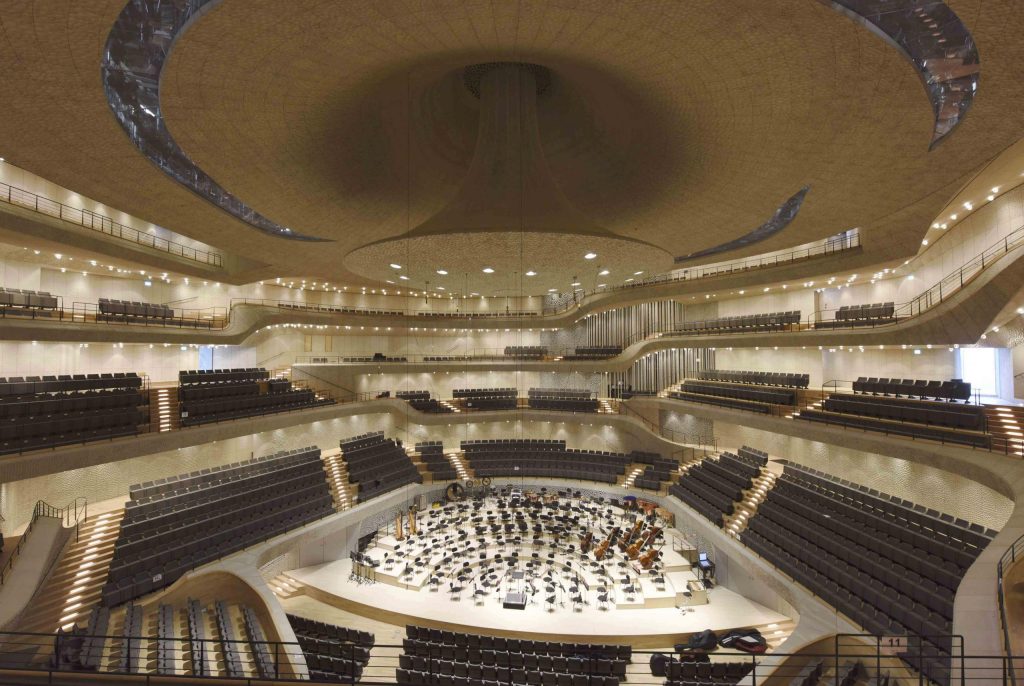Elbphilharmonie
The Hamburg’s treasure
Top Classical, February 2022
On Friday, November 4, 2016 the city of Hamburg was jumping of joy when at last, after a long bumpy journey the Elbphilharmonie was officially handed to the mayor, Olaf Scholz. The costs, since the idea was approved in 2005 until the completion of the works, grew 1000%, going from 77 million euros at that time, to 790 million today.
For the Swiss architects Jacques Herzog (1950) and Pierre de Meuron (1950), both born in Basel, the Elbphilharmonie is the most outstanding construction of the new century so far. The team is also the author of brilliant works like the Tate Modern in London, the oscillating university library of Cottbus or the football stadium in the shape of a tire from Munich.
As many cultural emblems, this German monument also has a nickname: Elphi. It is a glass and steel complex built over a historic warehouse for coffee, tea and cocoa based one of the docks of the colossal port of Hamburg. The slender construction includes a large concert hall with capacity for 2,100 spectators; a smaller room for chamber recitals (550); and a wide Plaza that serves a social meeting point for the public before the concert starts. At 80 meters in length, the escalator that leads to the upper floors is the longest in Europe.

The opening concert took place on January 11th, 2017 by the NDR Orchestra – Elbphilharmonie, conducted by Thomas Hengelbrock among emotional tears from some of the musicians who felt overwhelmed by the sentimental importance of the event.
However, not everything turned out great for this astonishingly beautiful hall. The Japanese specialist Yasuhisa Toyota was in charge of the acoustic design. Ten thousand diffuser panels, made with a mixture of ground rock (from Bavaria) and cellulose pulp (recycled paper and cardboard waste), line the room to achieve a better sound distribution.
Unfortunately the acoustics of the Elbhilharmonie in Hamburg have had major problems since it was inaugurated. The problem seems to be that the sound of the large auditorium is so sensitive and precise that every little noise (as paper wrapper of a candy) gets magnified, which causes that an orchestra can easily cover a singer voice preventing it from reaching some sectors of the venue. This was exactly what happened the concert of the Basel Symphony Orchestra with Kaufmann.
In the middle of the recital and when Kaufmann was singing Das Lied von der Erde by Gustav Mahler, a lady from the audience stood up and snapped at the tenor: Mr. Kaufmann we can’t hear you from here; a moment later another spectator was also complaining about the same problem. Some also moved around the room, quickly looking for a better place causing a big chaos on the hall. The reaction by the hall managers was prompt. The prize of the entrance tickets was lowered tickets with immediate effect for those less fortunate sectors of the room.
Ironically, and with the exception of a few large orchestras that have not yet done so, almost everyone wants to perform at the Elphilharmonie. But is a matter of prestige more than adequacy what moves this will.
The architectural beauty (designed by the Swiss studio Herzog & Meuron) and the acoustic exquisiteness of the Japanese engineer Yasuhisa Toyota fascinate visitors. The gigantic astonishing hall really deserve a visit, the interior decoration ant he innovative structure are worth admiring.
